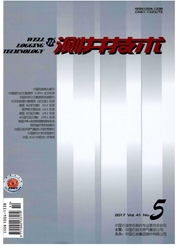

 中文摘要:
中文摘要:
高信息丰度的声波测井所测量与衍生的特性参数及其组合,与油气层密切相关,是识别气层、轻质油层的有效手段,但是测井资料的处理和解释还主要局限于时间域(时差或速度)的应用.为挖掘与充分利用获得的信息,以岩石物理研究的基本方法入手,从理论分析、岩石物理实验、三维数字岩心微观数值模拟以及现场应用等4个方面论证声学及其衍生的岩石力学特性系列参数在识别复杂储层流体性质的可行性和有效性,确立其理论方法的地位.在此基础上,形成拉梅系数、体积压缩系数、泊松比重叠分析的评价模式和方法,识别碳酸盐岩、火山岩、低孔隙度低渗透率等复杂储层的气层与轻质油层,见到良好地质效果.
 英文摘要:
英文摘要:
Acoustic logging measurements and characteristic parameters derived from the measurements are closely related to pore fluid type of reservoir. It is an effective mean to identify gas and light oil formation, while traditional processing and interpretation of acoustic logging data is limited to the application of time domain data(interval transit time or speed). In order to make full use of acoustic logging measurements to identify fluid type of complex reservoir, the feasibility and validity of the method is theoretically analyzed, rock physics experiments, numerical simulation based on three-dimensional digital cores, and on-site applications. The results show that several rock elastic properties are sensitive to the fluid properties of reservoir. A new evaluation method is established based on the combination of Lame coefficient, fluid compressibility coefficient, and Poisson's ratio of rocks. The method is applied to identify gas and light oil formation in carbonate, igneous, and low porosity and low permeability reservoirs, providing good geological results.
 同期刊论文项目
同期刊论文项目
 同项目期刊论文
同项目期刊论文
 Experimental research of gas shale electrical properties by NMR and the combination of imbibition an
Experimental research of gas shale electrical properties by NMR and the combination of imbibition an 期刊信息
期刊信息
